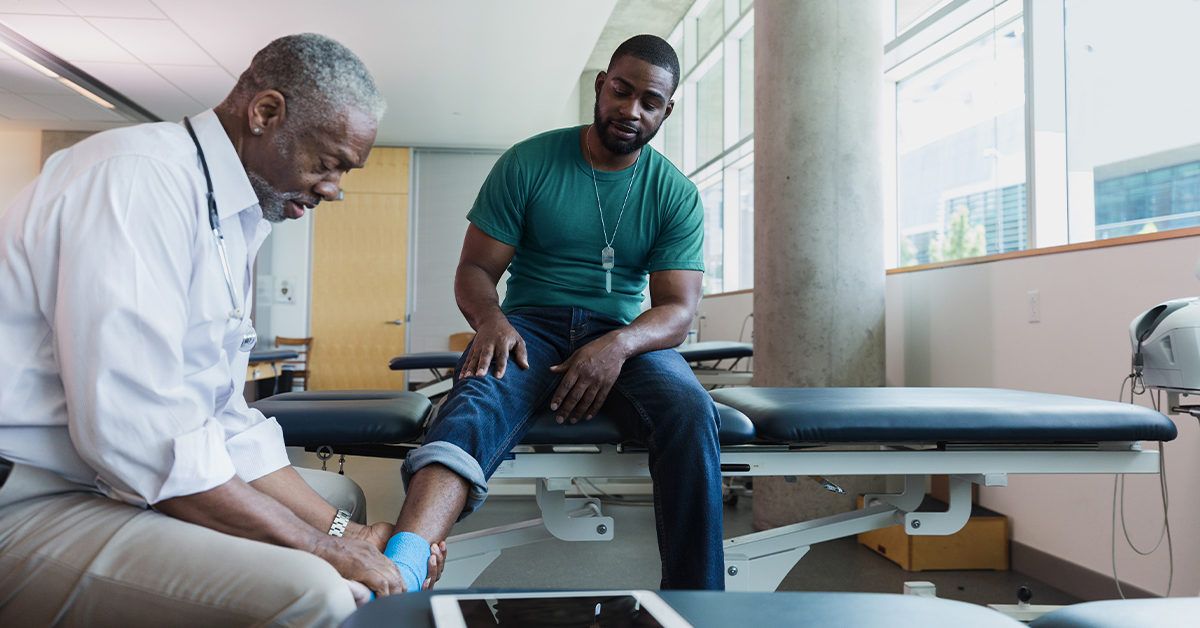Axis Spine And Orthopedics - Truths
Axis Spine And Orthopedics - Truths
Blog Article
A Biased View of Axis Spine And Orthopedics
Table of Contents10 Easy Facts About Axis Spine And Orthopedics DescribedHow Axis Spine And Orthopedics can Save You Time, Stress, and Money.Our Axis Spine And Orthopedics StatementsThe Axis Spine And Orthopedics PDFs
An orthopedic surgeon is a medical professional who specializes in treating troubles of the bones, joints, and connective tissues, and guaranteeing you preserve a healthy bone and joint system., we have very qualified orthopedic cosmetic surgeons that are qualified of treating people of all ages. I got involved in research during my first year of clinical college, and I began making connections with orthopedic specialists early on.
Talk about the post-operative care plan with your specialist. Arrange for transportation to and from the healthcare facility on the day of surgery.
The Of Axis Spine And Orthopedics

Your physician will certainly give plenty of information regarding post-operative treatment, including how to stay clean and keep the medical location clean. Following these ideas can prepare you physically and mentally for your orthopedic surgery. Remember to maintain a positive expectation and trust fund your clinical group's expertise, contributing to a smoother recovery procedure.

No one anticipates you to know anything, so do not attempt to remember a number of arbitrary facts. Or else, joint discomfort can truly mess up your life.
Typical problems treated by orthopedic doctors are: Cracks and Bone Injury: Broken bones and various other injuries from accidents or influences. Bone Cancer: Lumps in the bones. Orthopedic Injury: Serious injuries influencing bones, joints, or soft tissues.
Strains and Strains: Injuries to tendons and muscles. Tendinitis: Swelling of the ligaments. Orthopedic cosmetic surgeons execute a selection of treatments to aid individuals with bone and joint problems. Usual examples are knee and hip substitutes. Joint Repair: Reconstructing a harmed joint to recover its feature. Bone Grafting: Taking bone from one component of the body and transplanting it to one more area to fix and rebuild harmed bones. Reconnecting Nerves: Fixing broken nerves to recover motion and feeling. Spinal Disk Replacement: Changing a harmed spinal disk with a man-made one to alleviate discomfort and bring back function. You'll need to take and pass the Medical University Admission Examination( MCAT). This standard examination evaluates your knowledge and skills required for success in medical school. Clinical institution is an intense

The smart Trick of Axis Spine And Orthopedics That Nobody is Discussing
Next off, they finish an orthopedic residency. It's usually 5 years and provides hands-on learning in a medical setup. Appointments usually include: Discussing your symptoms, clinical history and way of living.
Treatment suggestions. Some problems need extra imaging, like a CT check or MRI for even more comprehensive views of the agonizing area. Your orthopedist will suggest therapies to reduce signs up until you get a medical diagnosis. Orthopedic doctors focus on nonsurgical and surgical strategies. For certain kinds of orthopedic injury or genetic problems, surgical treatment is commonly the initial line of treatment. For most various other problems, orthopedists try nonsurgical therapiesinitially. It may take greater than one kind of therapy to accomplish long lasting alleviation. Selecting the right is essential for effective medical results and improved person recovery. With a vast array of choices available out there, it can be frustrating for both doctors and individuals to make an educated decision. The top 5 elements to take right into account use this link when selecting an orthopedic implant are surgical compatibility, cost-effectiveness, considerations for modification surgical procedure, patient-specific factors, and the design and development of the implant. They are available in various forms, dimensions, and materials, each offering a details function based on the person's requirements. Comprehending the fundamentals of orthopedic implants is important prior to diving right into the decision-making process. One of the leading factors to consider when picking an orthopedic implant is its compatibility with the operation. Various implants are designed for different surgical techniques and methods. The orthopedic implant ought to be particularly designed to fit the individual's anatomy and make sure stability throughout the recovery procedure. Surgical compatibility includes factors such as implant size, form, and product. The success of orthopedic treatments counts greatly on the proper choice and positioning of implants that are compatible with the patient's makeup and clinical history. By focusing on client security and wellness, orthopedic specialists can accomplish successful end results and provide the best quality of treatment to their people. Doctors must meticulously take into consideration the biomechanical buildings of the implant and just how it will certainly incorporate with the individual's bone framework. This will contribute to much better surgical results, lowered problems, and shorter recovery time. When selecting implants for an individual, it is necessary to think about a variety of patient-specific variables that can influence the success and outcome of the treatment. These factors encompass the patient's age, bone top quality and quantity, oral health and wellness standing, case history, way of living practices, and aesthetic preferences. For older people with jeopardized bone thickness, much shorter implants or implanting treatments might be helpful to offer the required stability and assistance. 3. Is the dimension of the orthopedic dental implant a vital consideration? How does it impact the operation and the client's recuperation? Yes, the size of the dental implant is essential as it needs to match the individual's framework for appropriate fit and performance. 4. Can the person's age and way of life contribute in choosing the most suitable orthopedic implant? Absolutely. Just how does the expense of an orthopedic implant factor right into the decision-making procedure, and are there ways to stabilize high quality with affordability? The cost of the implant is a vital consideration, however it must not be the sole determining factor. Balancing top quality with affordability includes weighing different dental implant choices 'long-lasting advantages and potential difficulties. Report this page